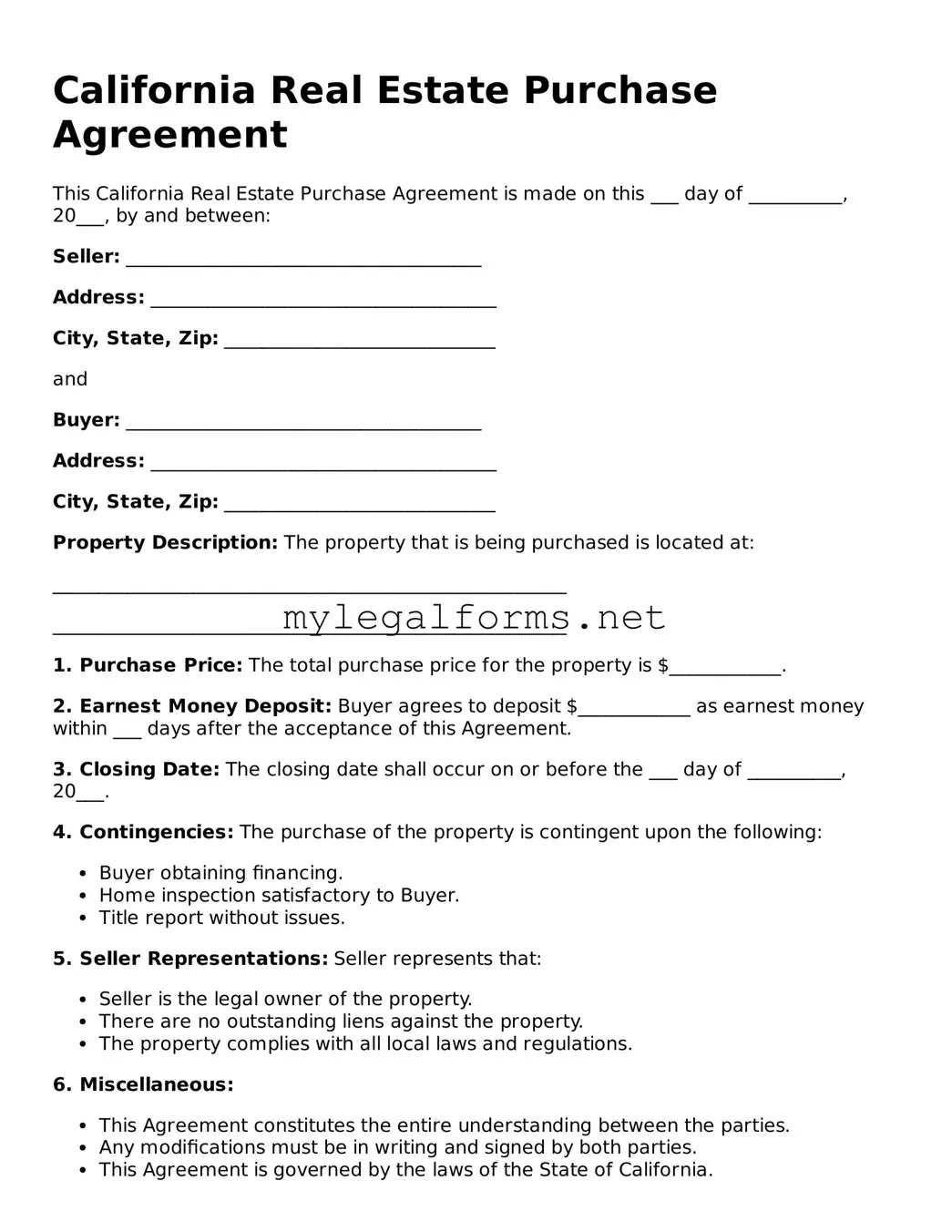California Real Estate Purchase Agreement
This California Real Estate Purchase Agreement is made on this ___ day of __________, 20___, by and between:
Seller: ______________________________________
Address: _____________________________________
City, State, Zip: _____________________________
and
Buyer: ______________________________________
Address: _____________________________________
City, State, Zip: _____________________________
Property Description: The property that is being purchased is located at:
_______________________________________________________
_______________________________________________________
1. Purchase Price: The total purchase price for the property is $____________.
2. Earnest Money Deposit: Buyer agrees to deposit $____________ as earnest money within ___ days after the acceptance of this Agreement.
3. Closing Date: The closing date shall occur on or before the ___ day of __________, 20___.
4. Contingencies: The purchase of the property is contingent upon the following:
- Buyer obtaining financing.
- Home inspection satisfactory to Buyer.
- Title report without issues.
5. Seller Representations: Seller represents that:
- Seller is the legal owner of the property.
- There are no outstanding liens against the property.
- The property complies with all local laws and regulations.
6. Miscellaneous:
- This Agreement constitutes the entire understanding between the parties.
- Any modifications must be in writing and signed by both parties.
- This Agreement is governed by the laws of the State of California.
IN WITNESS WHEREOF, the parties have executed this Agreement as of the date first above written.
Seller's Signature:_________________________ Date: ____________
Buyer's Signature:_________________________ Date: ____________
